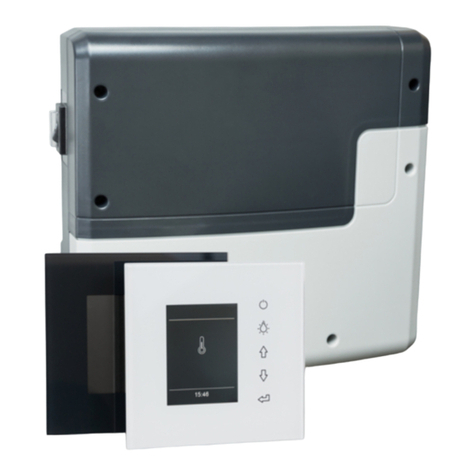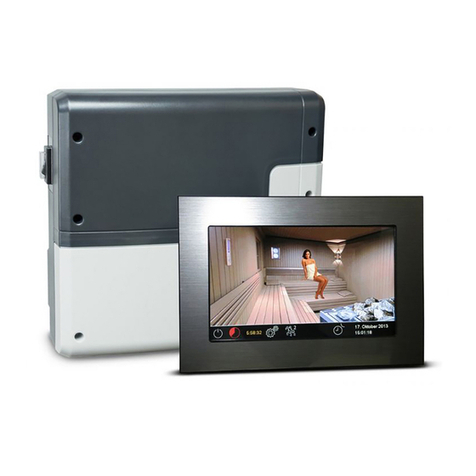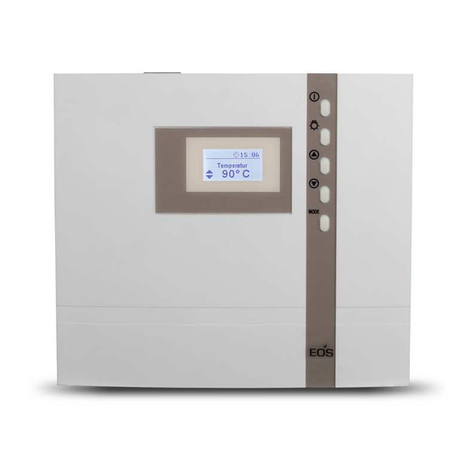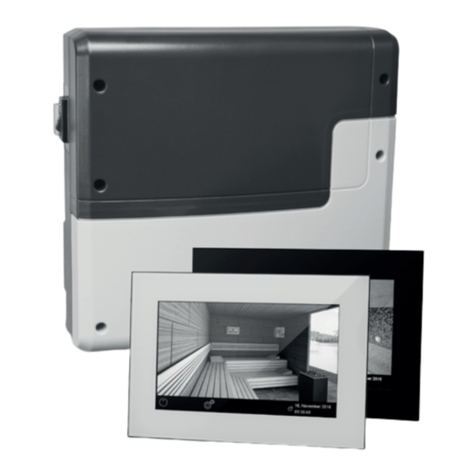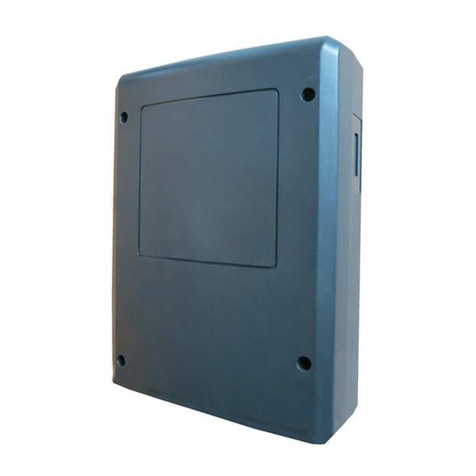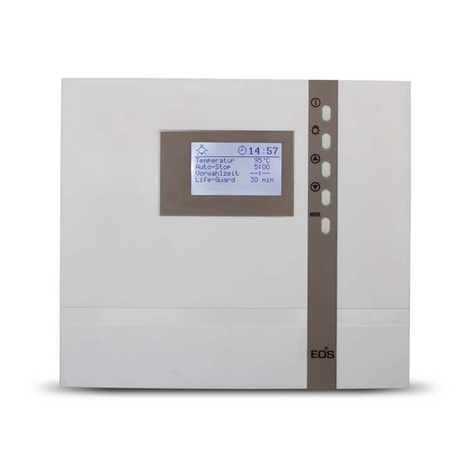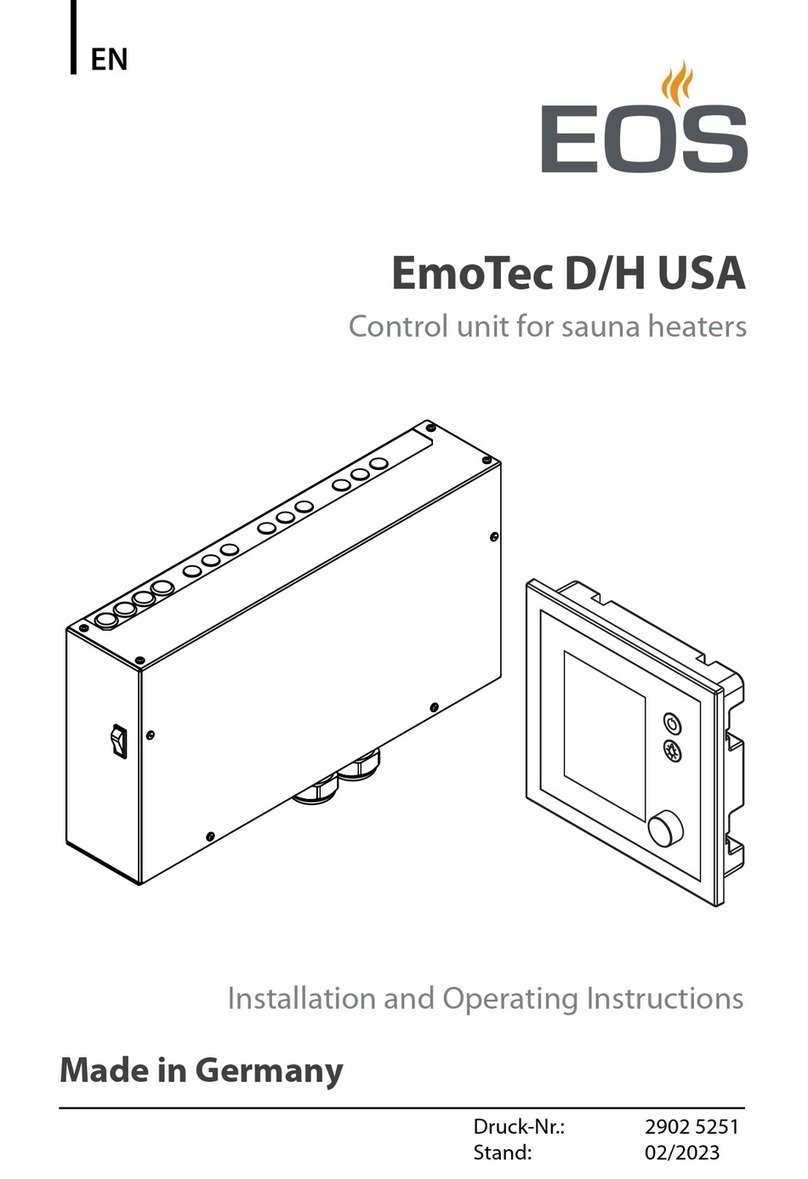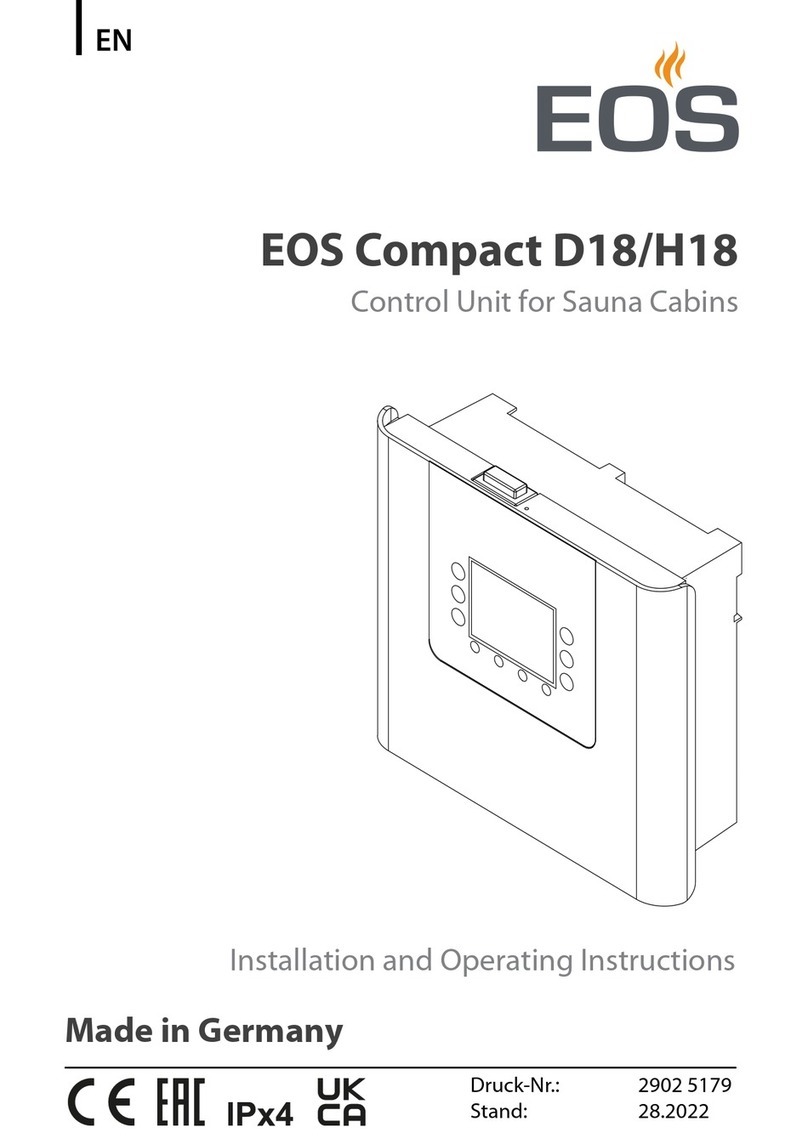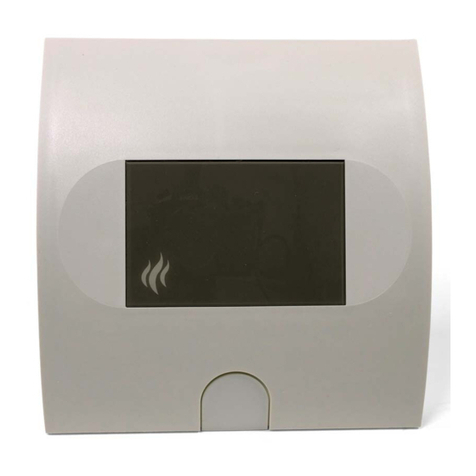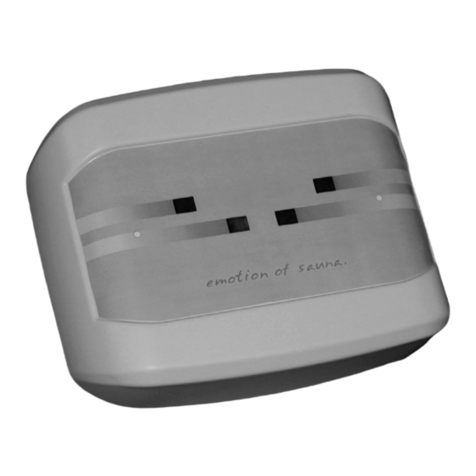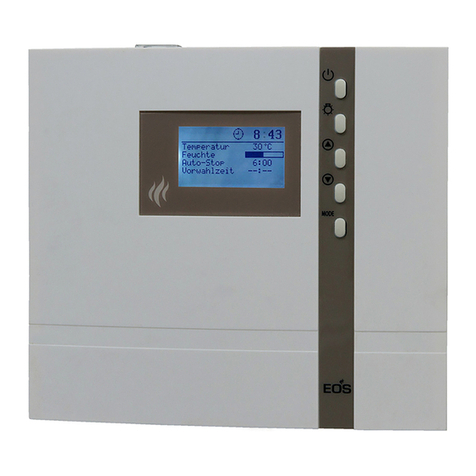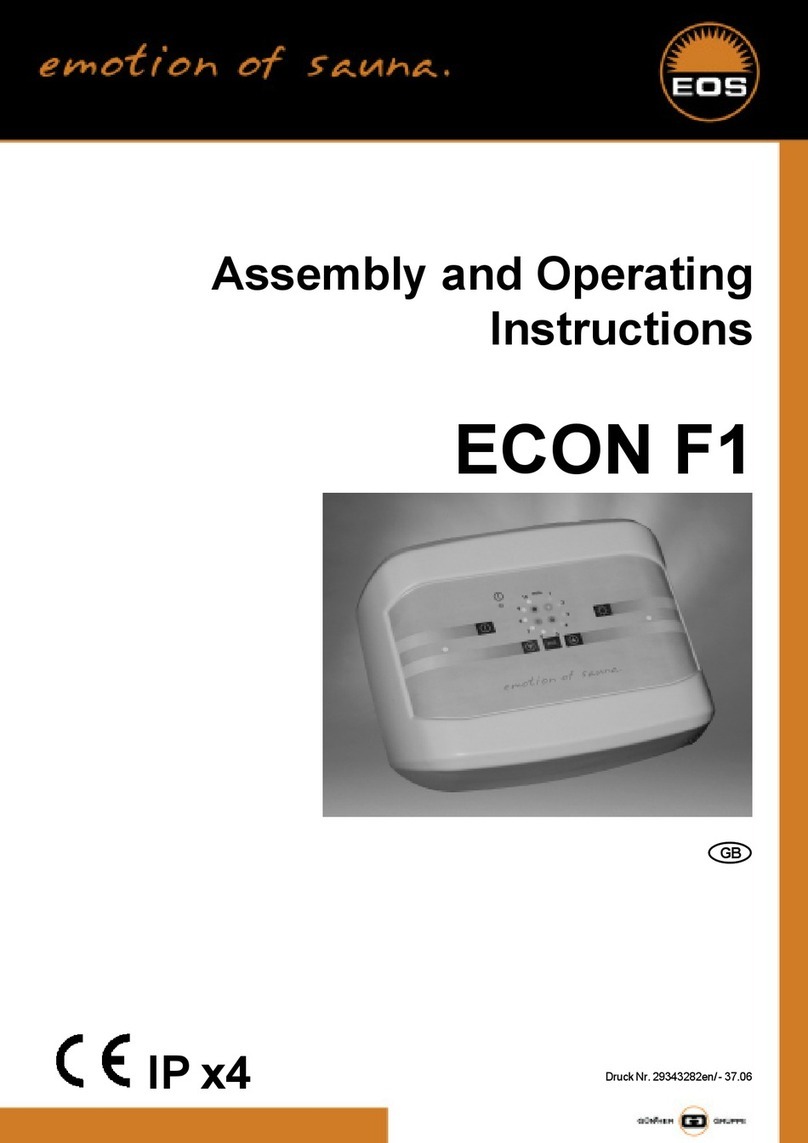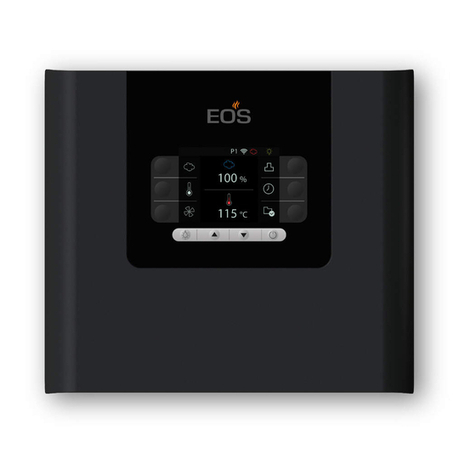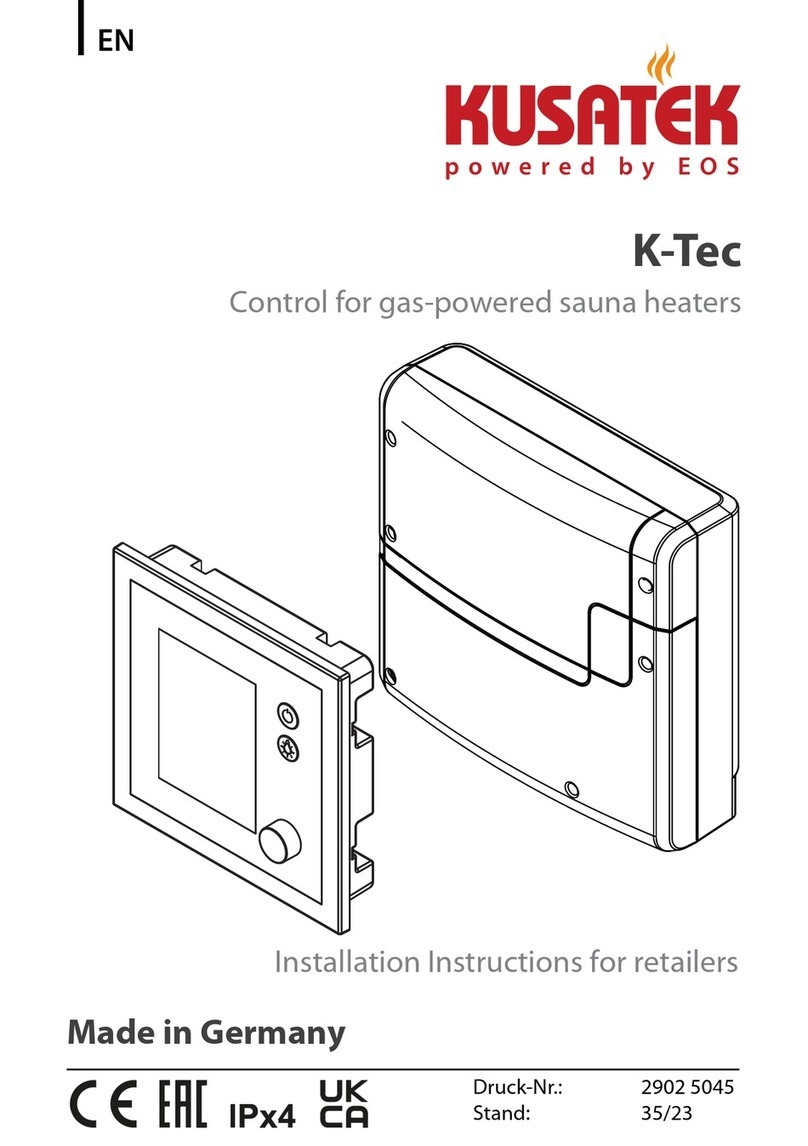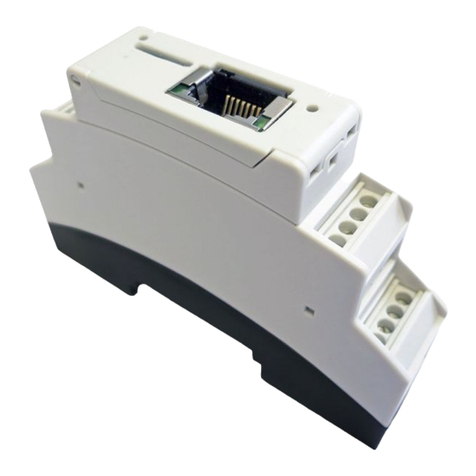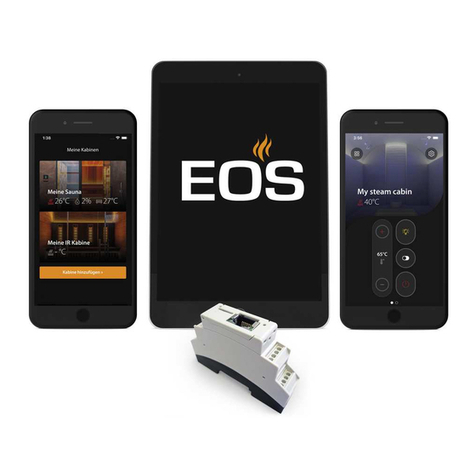
Please note that an optimal interaction be-
tween sauna cabin, sauna heater and sauna
control unit is mandatory for a pleasant sauna
climate in your cabin. With this high-quality
sauna control unit you can “operate“ your sau-
na system, and thanks to the many individual
programming options, surely you will quickly
nd the setting which suits you best.
Perception in the sauna is very subjective,
therefore, it really requires your own percep-
tion or that of your family to nd the most suit-
able settings.
The control units are supplied with the preset
typical climate values for a classic Finnish sauna
or for models with humidity control, as well as
for a sauna with humidity operation.
The following operating instructions describe
how to pre-select “your“ climate in the cabin.
Read these instructions carefully, so that you
General information about
sauna bathing
Preface
quickly and easily nd your way though the
programming process. Please note the varia-
tion in temperatures in the cabin while sauna
bathing. The hottest area is directly below the
cabin ceiling, whereas there is a steady temper-
ature gradient towards the oor of the cabin.
Inversely, the relative humidity is lowest direct-
ly below the cabin ceiling and the highest by
the cabin oor.
For safety reasons the temperature sensor with
the overheat safety shutdown is located on the
cabin ceiling above the heater, as this is usually
the hottest area in the cabin.
Thus, there will always be temperature varia-
tions between the temperature sensor of the
control unit and the thermometer in the cabin.
For example, when pre-setting the cabin tem-
perature to 100 °C, the thermometer inside the
cabin may show 85 °C - 90 °C. This is in accord-
ance with the typical climate inside the cabin.
Only use sauna-suitable (up to 140 °C temper-
ature-resistant) cabin lights. Always pay atten-
tion to hygiene. Always use hand- or bathing
towels to avoid getting perspiration on the
wood.
For control units with vaporizer connection
(optional), we recommend to reheat or dry the
cabin after each humid operation, in order to
protect your cabin from possible damage due
to the humidity mode. In addition, in poorly
ventilated rooms, a ventilation fan can be used
to remove the used moist air.
To avoid drafts, you should avoid using any
ventilation system while sauna bathing. It
should only be used if recommended by the
cabin manufacturer.
Dear customer,
you have purchased a high-quality electronic
device with which you will enjoy your sauna
& steam bath for many years to come. This
device was designed and inspected according
to the current European safety standards and
manufactured at the factory in accordance with
the quality management standard DIN EN ISO
9001:2015.
This detailed installation and operation manual
has been prepared for your information. Pay
particular attention to the important notes and
the information on electrical connection.
We wish you a restorative and eventful wellness
experience.
4EN
